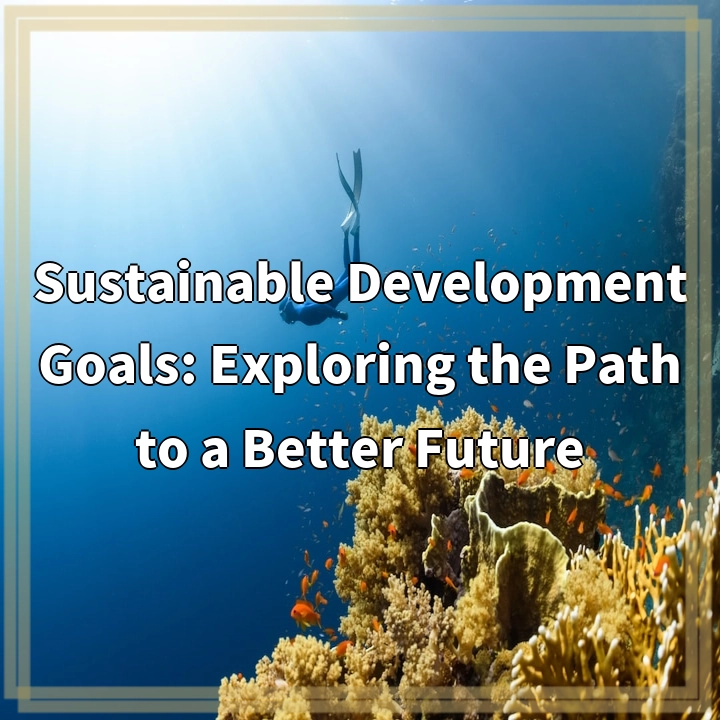
What Are Sustainable Development Goals (SDGs)?
Sustainable Development Goals (SDGs) are a set of global goals established by the United Nations (UN) with the aim of addressing social, economic, and environmental challenges worldwide. They were adopted in 2015 as a successor to the Millennium Development Goals (MDGs) and consist of 17 interconnected goals and 169 targets to be achieved by 2030. SDGs encompass a wide range of issues, including poverty eradication, gender equality, climate action, affordable and clean energy, sustainable cities and communities, and more.
Real-World Problems Associated with SDGs
1. Limited Progress and Implementation
One of the main challenges faced in achieving the SDGs is the limited progress and implementation at both the national and global levels. Despite significant commitments and efforts, many countries lag in implementing policies and initiatives aligned with the SDGs. Insufficient political will, lack of funding, and weak institutional frameworks hinder progress towards achieving the goals.
2. Inequality and Social Disparities
Addressing inequalities is a fundamental aspect of sustainable development. However, various forms of inequalities persist in many parts of the world, including income inequalities, gender disparities, unequal access to education and healthcare, and marginalization of certain social groups. These disparities pose significant challenges in achieving several SDGs related to poverty alleviation, quality education, gender equality, and reduced inequalities.
3. Threats to the Environment and Climate Change
Environmental degradation and climate change present significant challenges to achieving the SDGs. Rising temperatures, deforestation, biodiversity loss, and pollution pose substantial threats to ecosystems and livelihoods. Climate change exacerbates existing vulnerabilities, affecting agriculture, water resources, and human health, among other areas. Achieving SDGs related to sustainable cities, climate action, responsible consumption, and life below water and on land requires robust efforts to address these environmental challenges.
4. Global Partnerships and Cooperation
Achieving the SDGs requires global partnerships and cooperation among governments, international organizations, civil society, and the private sector. However, fostering effective partnerships and collaboration remains a challenge. Differences in priorities and interests, lack of coordination, and limited resources can hinder the implementation of collaborative projects and initiatives essential for achieving the goals.
5. Monitoring and Data Availability
Monitoring progress towards the SDGs is crucial for assessing the effectiveness of policies and interventions. However, inadequate data availability and quality pose challenges in tracking and evaluating progress. Many countries lack the necessary data collection mechanisms, making it difficult to measure progress accurately and identify areas that require attention and intervention.
Conclusion
Sustainable Development Goals (SDGs) provide a comprehensive framework for addressing global challenges and creating a better future for all. However, several real-world problems, including limited progress and implementation, inequalities, environmental threats, and the need for global partnerships, present significant obstacles to achieving these goals. Overcoming these challenges requires collective effort, political will, resource mobilization, and effective policy implementation at all levels.

Solutions to Real-World Problems Associated with SDGs
1. Enhancing Implementation and Political Will
To address the limited progress in achieving the SDGs, it is crucial to enhance implementation efforts at the national and global levels. This involves strengthening political will, incentivizing governments to prioritize the goals, and allocating adequate resources for their implementation. Additionally, establishing clear accountability mechanisms and monitoring progress regularly can help drive action and ensure commitment to achieving the goals.
2. Tackling Inequalities through Targeted Interventions
Addressing inequalities requires targeted interventions across multiple dimensions. Governments and organizations can implement policies that promote inclusive growth, equal access to education and healthcare, and gender equality. Efforts should focus on reducing income disparities, empowering marginalized communities, and fostering social cohesion. Multi-stakeholder partnerships and collaborations can play a significant role in supporting initiatives that aim to reduce inequalities and ensure that no one is left behind.
3. Strengthening Environmental Stewardship and Climate Action
To combat environmental challenges, robust measures are needed to promote sustainable environmental practices and mitigate climate change impacts. This includes adopting renewable energy sources, promoting sustainable land use and resource management, and implementing effective waste management strategies. Encouraging eco-friendly behaviors, supporting conservation efforts, and advocating for policies that prioritize environmental sustainability are essential for achieving the SDGs related to the environment and climate action.
4. Fostering Global Partnerships and Collaboration
Enhancing global partnerships and collaboration is critical in achieving the SDGs. Governments, international organizations, civil society groups, and the private sector must work together to share knowledge, experiences, and resources. Encouraging dialogue and cooperation, fostering innovative financing mechanisms, and creating platforms for collaboration can help overcome barriers and promote effective implementation of SDG-related initiatives.
5. Improving Data Collection and Monitoring
To accurately track progress and identify areas that need attention, there is a need for improved data collection and monitoring mechanisms. Governments should invest in reliable data systems and strengthen statistical capacities to measure progress effectively. Collaboration among countries, UN agencies, and other stakeholders can support the sharing and exchange of data and best practices, enabling more informed decision-making and targeted interventions.
Conclusion
The challenges associated with achieving the SDGs require comprehensive solutions that address implementation gaps, inequalities, environmental threats, partnership development, and data availability. By enhancing political commitment, addressing inequalities, fostering environmental stewardship, promoting collaboration, and improving data collection, we can make significant progress towards realizing the SDGs and creating a better future for all.















